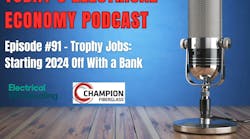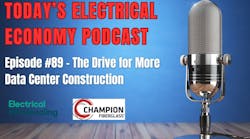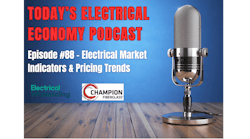Wholesale distribution is a unique business structure that has elements of manufacturing, retailing, and professional service platforms. The business model is, for all intents and purposes, a century old. It has its roots in the Industrial Revolution, when entrepreneurs first seized on opportunities to get parts and components to market.
The primary value-added proposition of the wholesale-distribution industry is to take numerous parts and pieces from varying manufacturers, break bulk and stock them in a geographically accessible location. Other valued services include shipping, technical support, extension of credit and warranty processing. Wholesale distribution for durable goods covers approximately four dozen distinct vertical markets with sales in the neighborhood of $2 trillion dollars.
The cost structure and behavior of costs is increasingly important for distributors. The industry is mature, processes and territories are well established and a substantial portion of profit growth in the forecasted slow-growth markets of the next several years will come from operating efficiencies. The contention, in this series of articles, is that operating cost will become an increasingly important strategic necessity. If one doubts the need for operating cost management, they should consider the two decade trend of acquisition. Acquisition, at its core, removes costs and creates greater efficiencies. Acquisitive companies are masters of removing redundant administrative, accounting, information technology (IT), purchasing and management costs. While other reasons for acquisition are prevalent, reducing the cost of services is a key driver.
In mature markets the axiom that the low-cost producer wins is well represented. One only has to look at companies such as Walmart, Southwest Airlines, Nucor Steel and Emerson Electric to see where the strategy of cost reduction and position as a low-cost producer has advantages. Low-cost producers not only have detailed measurements of cost, but they understand how costs behave or “move” under changing conditions. A basic premise of this article is that the understanding of cost behavior in the wholesale distribution industry is rather poor and stems from inadequate measures and theories about the cost structure of the business.
Limitations of financial accounting in the distribution business
Many segments of the wholesale distribution market use “PAR reports” as intra-industry financial comparisons, and many associations sponsor these reports on an annual basis for their members. These comparatives include ratio analyses of financial metrics along with percentage (normalized) comparisons of the statement of income and the balance sheet. Many association members have been to many seminars on using these comparative reports to improve their operations and hopefully their profits. However, one association executive recently told me, “It's getting increasingly difficult for us to get our distributors to participate in PAR reports.” From our research and conversations with industry professionals, few distributors find competitive advantage in filling out PAR reports. This stems from the pervasiveness of the product to the growing realization that financial accounting has limitations in its ability to enhance profit growth.
To understand the limitations of financial accounting, it's important to understand the cost nature of distribution. Typically, three types of costs exist: fixed, variable and step. They can be seen graphically in the chart “Understanding the Nature of Cost” on this page. In the exhibit, unit sales are on the vertical (Y) axis and cost per unit is on the X axis. Units are defined as orders or transactions and cost is defined as full cost of the transaction, including material and recurring service costs.
Fixed costs slowly vary with volume and include warehouses and executive salaries, while variable costs rise directly with sales volume. They include the cost of materials and shipping. In some instances, distributors include freight as a direct cost and allocate inbound and (sometimes) outbound bound freight over the cost of goods. Step costs are those costs that “step up” with volume. These include administrate labor, purchasing, sales, middle management, warehouse, customer service, IT and other functions.
To get a handle on defining your costs, review the chart “Strategic Objective by Cost Category” on page 44. The chart lists costs by category specific to distributors. For instance, warehouse and officer salaries are listed as fixed, while inventory, shipping and truck expenses are considered to be variable costs. You can see in the chart that most operating expenses are designated as step costs. Depending on the classification, I have found that — on average — three fourths of operating expenses for distributors can be classified as step variables. The strategic implications for each category are listed under the heading “Strategy Objective.” For example, it's important to understand how to align variable costs with customers and customer segments, and to ask yourself, “In which customers or segments do we charge for shipping?” For step costs, you must answer the question, “Are our capacities for each operation utilized and efficient?”
One of my basic premises in this series of articles involves step costs, or what financial accounting calls operating expenses. Operating expenses are directly controlled by the distributor and therefore are a source of substantial competitive advantage. Understanding step costs and how they behave is crucial to becoming a low-cost producer. I believe wholesale distribution is a step-cost business platform. Not everyone agrees with that premise, and some industry observers believe this business basically has a fixed-cost structure, because a firm must be staffed with sellers, warehouse workers, administrative staff and others to conduct business. The fixed cost argument has its appeal, especially when one looks at the time periods that are the domain of financial accounting and reporting. However, my research and industry analysis does not necessarily look at time periods, but at transactions and whether each individual transaction is profitable. When viewed from a transaction perspective versus an accounting period, distributor costs follow consistent behaviors including:
-
Step costs rise with transaction volume and when transaction volume decreases dramatically, distributors decrease step costs (think of the recent recession).
-
Different transactions have different costs and vastly different influence on operating profits.
-
Some transactions are historically unprofitable.
-
Transactions are the fundamental unit of value added for distributors and have been largely ignored in financial accounting.
Because of the inattention to transactions and poor modeling of their costs, financial accounting has significant limitations when it comes to driving operating profit. If step costs comprise the actionable costs for the distributor, then financial accounting does not adequately capture and define these costs for managerial decision-making. For instance, consider the terms “margin dollars on sales” or “gross profit.” The concept is a time-period concept from the income statement and is defined as sales price less the product cost. But it does not consider the unique step costs of the transaction, which can be substantial. A glaring example of the inadequacy of financial accounting is when gross profit is used as a singular measure for sales progress. The majority of field salespeople earn bonuses or commissions based on gross profit. Without a reasonable allocation of step costs, many sales (transactions), customers and sales territories are unprofitable and don't contribute to operating profit. An estimated 40 percent of the outside sellers rewarded on gross margin have territories that don't contribute to operating profit. Simply put, in an aggressive step-cost business, terms such as gross profit or margin dollars don't mean much unless they are paired with the step costs they incur.
Financial accounting in the manufacturing arena has dealt with costs that directly vary or step up with volume in allocating labor, overhead and materials into the cost of goods. When it comes to wholesale distribution, the cost of goods only considers the direct cost of materials. Hence, step costs that are important in the decisions of pricing and service provision are left out of gross margins and gross profits. These measures are commonly used to measure and drive operating profits for wholesalers. I believe financial accounting and the associated PAR reports are conventions for time period reviews of profitability and paying taxes. They are of limited and declining value in maximizing operating profit in a transaction intensive business with aggressive step costs.
In future parts of this series, I will further explore the cost nature of distribution and how it can be measured for better managerial insight. I believe step costs — which make up some three-quarters of operating costs — will become strategically important for survival in the coming years, and that understanding their behavior will separate winners from losers. Another basic premise in this series is that traditional financial accounting and PAR reports are of limited use in driving operating profits. Concepts such as gross profit and gross margin, without consideration of step costs at the transaction level, can be very misleading and financially destructive. Financial accounting concepts and definitions have their place, but they fall woefully short in helping drive efficiencies in the aggressive step-cost structure of wholesale distribution.
Scott Benfield, president, Benfield Consulting, Naperville, Ill., is a consultant for distributors and industrial manufacturers in the areas of growth strategy, channel decisions, marketing, sales, and operations. He can be reached by phone at (630)-428-9311 or by e-mail at [email protected]. His company's website is www.benfieldconsulting.com.








